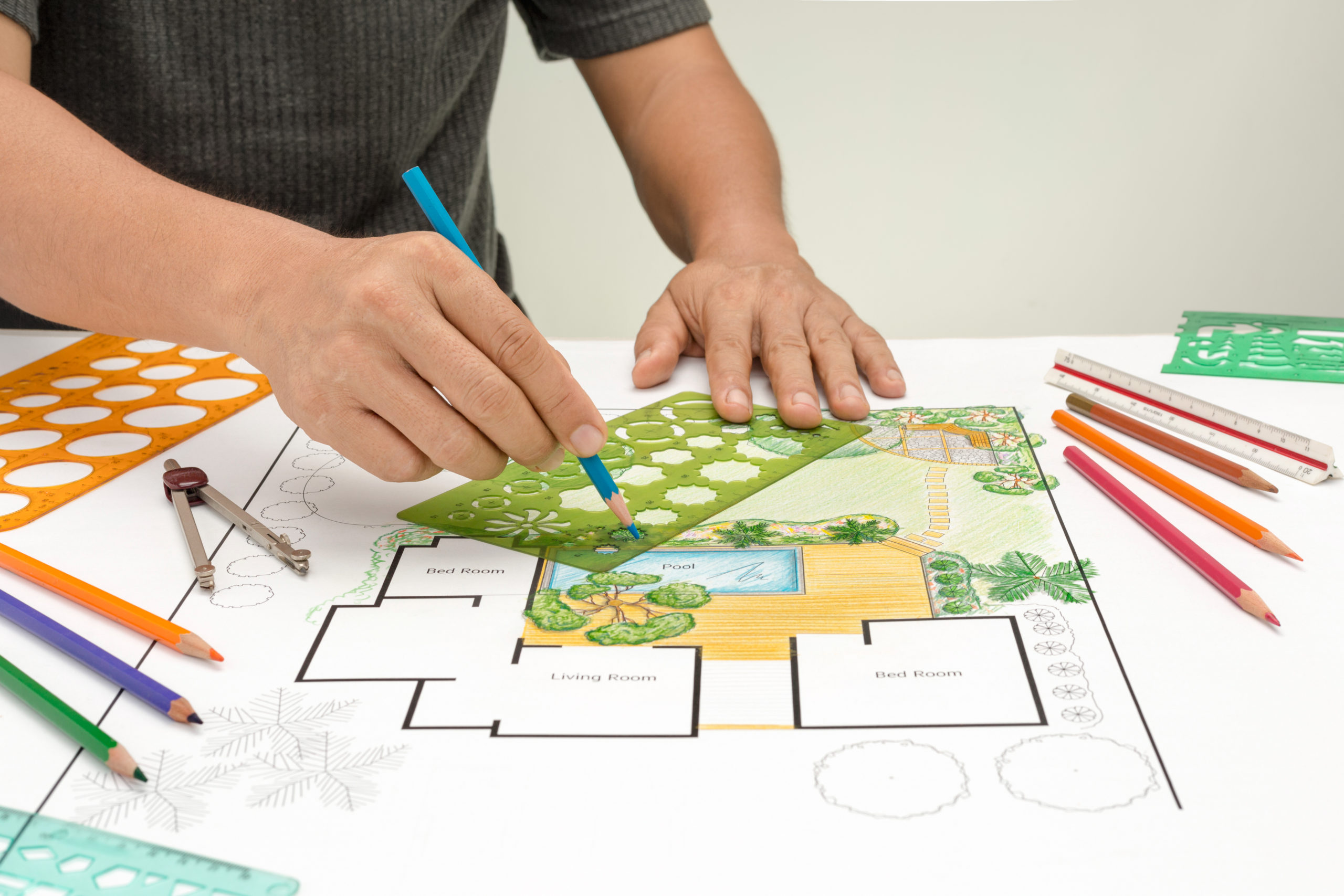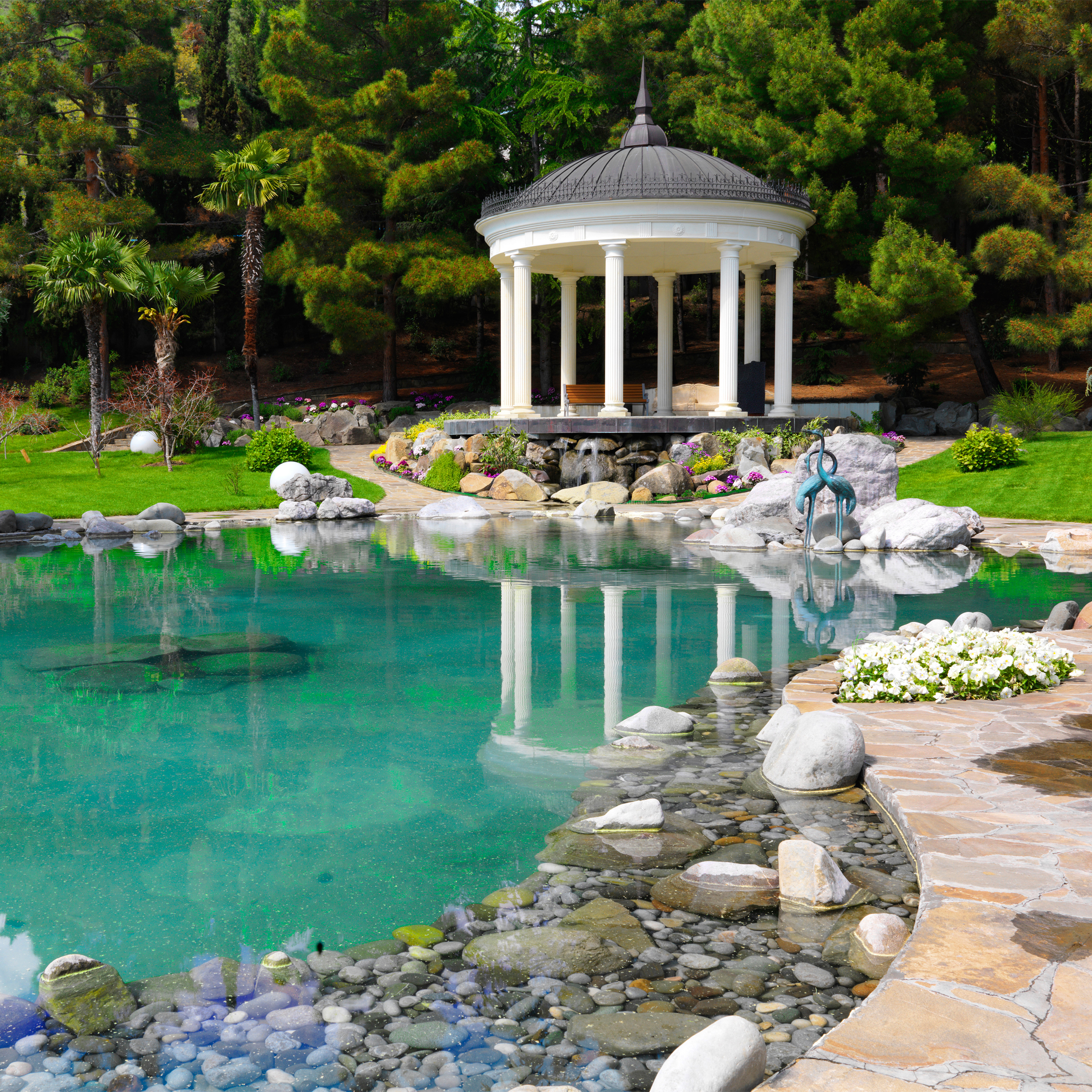Ever thought about the role of landscaping in pool construction and maintenance? You’re not alone. Whether you’re designing a new pool or sprucing up an old one, integrating effective landscape elements is key.
It’s not just about aesthetics; it can also make your maintenance tasks easier. This guide will provide you with practical tips and insights on how to masterfully blend landscaping into your pool project.
Let’s dive in!
Understanding the Importance of Landscaping in Pool Construction
You’ve got to understand that landscaping isn’t just about making your pool area look pretty; it’s a crucial part of the whole construction and maintenance process. It is more than simply selecting plants, placing rocks, or choosing outdoor furniture. It’s an artful blend of aesthetics, functionality, and practicality.
Take into account the Landscaping Costs. That’s not just the initial financial layout for design and installation but also includes ongoing upkeep expenses. A well-planned landscape design can help minimize these costs by incorporating low-maintenance plant selections and wisely utilizing natural resources such as sunlight and rainwater.
Pool Aesthetics are significantly enhanced by thoughtful landscaping. The right vegetation can create a lush oasis effect while architectural elements like decking or pathways lead the eye through the space fluidly. Integrating functional components such as shade structures or lighting fixtures add both visual appeal and practical use.
Moreover, great landscaping contributes to pool safety measures too! For instance, strategic plant placement can act as natural barriers, preventing accidental falls into the water.

Key Landscaping Elements to Consider During Pool Construction
When designing your backyard oasis, it’s important to consider key elements such as the types of plants, stones, and lighting you’ll incorporate.
Plant selection plays a vital role not only in aesthetics but also in pool safety and maintenance. Choose non-deciduous plants to minimize leaf drop into the pool. Also, opt for species that have non-invasive root systems to prevent damage to the pool shell.
Drainage solutions are equally crucial. Without proper drainage design around your pool area, excess water can lead to soil erosion or even damage your property foundation over time. Incorporate subtle slopes leading away from the pool towards drain lines or create a dry creek bed with stones for a more aesthetic approach.
Consider how different materials like stone will interact with water splashed from the pool; some may become slippery when wet posing a safety risk. For lighting, think about where shadows will fall at night; well-placed lights can add depth and enhance features within your landscape.
Remember: quality landscaping during pool construction not only enhances beauty but also ensures longevity and ease of maintenance in your backyard retreat. By carefully considering each element, you’re on track to creating an outdoor space that’s both inviting and functional.
How Landscaping Contributes to Pool Maintenance
It’s often overlooked, but the right kind of greenery can significantly cut down on your backyard retreat’s upkeep needs. Plant selection is essential in creating an environment that demands less water, fewer chemicals, and minimal cleaning. Opt for native plants, for instance; they’re adapted to your local climate and require less care. They also aid in establishing a natural habitat that draws beneficial insects and birds.
Let’s talk about drainage solutions. Rainwater runoff from poorly planned landscapes can wreak havoc on your pool maintenance regimen. You’ve got to ensure that rainwater flows away from the pool area to prevent erosion and contamination. Incorporate features like bioswales or rain gardens – these attractive landscape components are designed to intercept runoff, filter out pollutants and allow water to soak into the ground slowly.
Practical Tips for Integrating Landscaping Into Pool Maintenance
Let’s delve into some practical tips for incorporating greenery into your backyard retreat’s upkeep strategy.
Beginning with plant selection, it’s crucial to choose flora that can thrive in poolside conditions. Opt for species that tolerate splashed chlorine water and intense sunlight well, such as agave or yucca. They’ll not only survive but also add an elegant touch to your pool area.
You should resist the urge to plant trees too close to the pool even though they provide desirable shade. The reason being their leaves and roots could potentially cause maintenance issues down the line. Instead, consider installing a pergola or awning if you need more shade.
Drainage solutions are another integral part of integrating landscaping into pool maintenance. A good drainage system will prevent pooling of water and protect both your plants and the integrity of your swimming pool structure. Consider implementing a French drain system around your pool deck – it’s unobtrusive yet highly effective.
Case Studies: Successful Pool Projects With Effective Landscaping
There are several successful projects that have effectively incorporated greenery into the design and upkeep of their backyard oasis. These cases shed light on how you can thoughtfully integrate poolside aesthetics with sustainable designs.
In one instance, a homeowner transformed an outdated space into an enticing oasis by strategically placing tropical plants around the pool. This not only enhanced its visual appeal but also created natural shade, reducing water evaporation and maintaining cooler temperatures.
Another project demonstrated how to use indigenous plants for landscaping. By doing so, they optimized water usage as local species are naturally adapted to the climate. They’ve minimized maintenance while promoting biodiversity.
You should consider integrating vegetation directly into your pool’s design. A project in California did this by creating a natural green wall along one edge of the pool, providing privacy and serving as a softening backdrop against the hardscape elements.
Lastly, don’t overlook underwater foliage like lily pads or reeds which add depth to your pool’s look while offering habitats for beneficial insects and microorganisms.

Frequently Asked Questions
What Are the Potential Legal Considerations When Landscaping Around a Pool?
You’ll need to consider zoning regulations’ impact on pool landscaping. Issues can include property boundaries, environmental restrictions, and landscape lighting safety. It’s crucial to consult local laws before starting any such project for hassle-free maintenance later.
Are There Specific Plants or Trees That Should Be Avoided Near a Pool?
Yes, you should avoid plants with invasive roots to prevent plant root damage. Also, steer clear of allergenic plants as they can cause discomfort for swimmers. Always consider these factors in your pool’s landscaping design.
How Can Landscaping Affect the Temperature of My Pool?
Landscaping significantly impacts your pool’s temperature. Proper shade management can cool it, while wind impact may lower the temperature. So, strategic placement of trees and structures is crucial for maintaining your desired pool temperature.
Are There Any Cost-Saving Measures I Can Implement in My Pool Landscaping?
Absolutely, you can cut costs by implementing sustainable landscaping. Use native plants that require less water and maintenance. Also, consider water conservation techniques like rainwater harvesting for irrigation to save on your water bill.
How Does Landscaping Around a Pool Influence Property Value?
Well-executed landscaping enhances pool aesthetics, boosting your property value significantly. Strategic outdoor lighting amplifies this effect, highlighting key features. It’s not just about the pool, but how it integrates with the overall landscape design.
